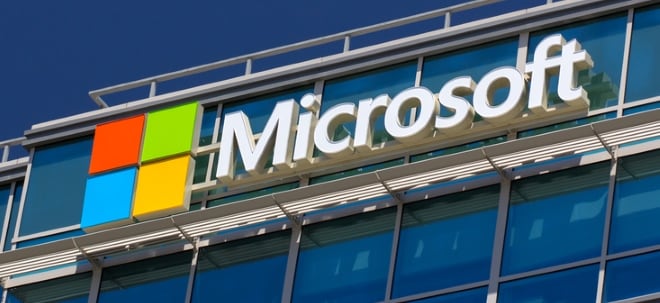Getting gold on G20 agenda is key in fight against illegal trade
GOLD’S record-breaking gains have generated joy among its miners — but also worry. Looking beyond the outsized financial gains for investors, the explosion in demand for a “reserve asset” is a clear sign the world is taking cover.David Tait, CEO of UK-headquartered industry body the World Gold Council (WGC), said of the metal’s 66% gain this year: “[It’s an] inherent fear of some form of meltdown. I think it’s the fear of financial Armageddon — shall we say, the runaway debt scenario.”According to the International Monetary Fund, global indebtedness will exceed 100% of GDP by 2029. The US, heading for a trade deficit of up to 8% this year, leads the way. It’s one of the reasons confidence in US treasury bills and the dollar has plummeted. In a parallel development, central banks, net purchasers of gold since the pandemic, have been the metal’s biggest fans.This year, investors have followed en masse. Third-quarter purchases of gold-backed ETFs were $26bn — a record high. Unsurprisingly, $16bn of that buying was in the US, mirroring the nation’s dominant position in gold on reserve — 8,333t in the second quarter, more than double that of Germany, the next largest.“What has been very interesting is that gold has really become mainstream, not just in terms of those investors who’ve been interested historically,” said Ruth Crowell, CEO of the London Bullion Market Association (LBMA), which oversees the refining and trading of gold globally.“The wider world is waking up to the fact that [gold] has proved its case as a safe-haven asset,” she said. “I think it’s becoming recognised more and more as a valuable and mandatory part of the portfolio on a mainstream level.”Gold’s rapid increase in popularity is more than both the WGC and LBMA could have hoped for. That’s because the two organisations have been co-operating on ways to boost gold’s appeal for the past few years. The gold bonanza is a godsend.For the LBMA, this includes improving and broadening standards on provenance. It wants its members, LBMA-accredited refiners, to be able to say by 2027 where their gold came from, and to account for gold flows. At present only a fraction of accredited gold — about 1%-2% of total production — is artisanally mined.Central bank supportThe WGC’s London Principles is aimed at persuading central banks to adopt domestic purchasing programmes for artisanal and small-scale gold mining. The first signatories are the central banks of Mongolia, the Philippines, Colombia and Ecuador, the latter chairing the initiative. Other banks are waiting in the wings, including South Africa. The aim is to give participants in artisanal mining an alternative network to the growing illicit global trade in gold.A report by the WGC published last year, Silence is Golden, sought to draw attention to the industrial-scale network of contraband gold — about 20% of world production, worth $95bn. It said artisanally mined gold is being subverted by terrorist organisations.Colombia’s Farc finds it easier to smuggle gold than cocaine, the report said. Islamic State and Russia’s Africa Corps (formerly the Wagner Group) finance their activities with illegally mined and traded gold. In many cases, gold mining communities are forced into supplying terrorist and criminal groups with their gold, leading to a host of social evils such as child labour, prostitution and human trafficking.At the time of the report, gold was trading at about $2,600/oz, about 62% below its present price. WGC CFO Terry Heymann said illegally traded gold had become more lucrative. “Everything we hear anecdotally is that it’s becoming a bigger problem, which is not a surprise,” he said in an interview.They’re panicking about it because soon they won’t have anybody left to run the police — they’re all going to be digging – David Tait, World Gold CouncilThe WGC’s solution to illegally traded gold is to establish on-the-ground processing plants, funded by foreign capital Tait says is being made available. An abundance of accredited regional processing units will pay a better price for the artisanally mined gold and not use child labour. They will employ less polluting practices, replacing the mercury-based extraction commonly used by the small mining sector with cyanide processes.In fact, mercury is such a feature of illegal mining in Ghana, known in the country as “galamsey” (gather them and sell), that its continued use will have a major effect on the country’s watercourses and ultimately its agricultural sector. “In five to 10 years, about 80% of Ghana’s water supply will be unpotable at current rates,” Heymann said. “And what does that mean for migration and challenges around people living in Ghana?”There’s also a loss of skills. Instead of eking a living out of agriculture, subsistence farmers have turned to mining. Even the civil service, tasked with policing and implementing governance to dissuade illegal mining, is being sucked into the gold rush. Tait said police services in the Central African Republic are being stripped of skills. “They’re panicking about it because soon they won’t have anybody left to run the police — they’re all going to be digging,” he said.A domestic purchasing programme linking localised processing units to central banks, aligned with the London Principles and working with an LBMA refiner, is the model the council wants to implement. “At the moment, I think many aspects of that model are working, but nobody has put that whole chain in place yet,” said Heymann.Critics of the WGC plan point to the difficulty of rolling out mini-processing units; they would need to number in the thousands to succeed. But the greatest challenge boils down to enlisting political will in countries where artisanal and illegal mining proliferate.It’s worth pointing out that not all artisanally mined minerals are illegal — far from it.“We’re a West African gold producer,” said Guy Young, CFO of Endeavour Mining, a Toronto- and London-listed gold miner. “In West Africa, artisanal mining is not just illegal mining, it’s part and parcel of the culture.”Young said his company distinguishes between legal and illegal artisanal gold mining, but he acknowledges illegal operations are on the increase. “Yes, there’s been an uptick by virtue of the price, and there has been quite a lot of dislocation, given the geopolitical conflict that’s going on in West Africa as well. Both those factors have led to increased ASM [artisanal and small-scale mining] activity,” he said.Winning the politics is keyTait has spoken previously of trying to get a ‘G7 moment’: political impetus or a broadly accepted policy approach to artisanal mining. The next few months will be decisive.Leadership of the G7 transfers to France next year from Canada, itself a thriving mining country. This is expected to assist the WGC’s lobbying efforts, if only because France’s former colony Burkina Faso is a prodigious gold producer while battling rampant jihadist terrorism within its borders. Niger, a uranium producer, is also a former colony of France.Speaking at the FT Metals & Mining Summit in London this month, Tait said there is also a rare opportunity to win over the G20, which meets in Johannesburg this month as South Africa’s presidency draws to a close.Heymann, however, is uncertain if artisanal mining will be an agenda item at the G20. “I think it’d be fair to say progress has been a little bit slower with the South African government than we might have anticipated,” he said. “We very much hope that it will be on the agenda, but that is at the discretion of South Africa.”South Africa has good reason to focus on illegal mining. In January, the bodies of 78 illegal gold miners were recovered at the defunct Stilfontein mine in North West. In Mpumalanga, 4,000 illegal miners were arrested at Barberton gold mines by UK-listed Pan African Resources.I think it’d be fair to say progress has been a little bit slower with the South African government than we might have anticipated – Terry Heymann, World Gold CouncilWest of Johannesburg, illegal miners are tearing up roads constructed in the 1970s with waste ore mined at the long-shut Durban Roodepoort Deep (DRD) mine. Containing a gram of gold per ton of rock — way above the 0.189g/t DRD’s former owner averaged in its 2025 financial year from tailings operations — the roads represent great business. And it’s becoming more attractive: a kilogram of gold is today worth R2.3m — R800,000 more than in October last year.But Tait is hopeful of progress. “We are using the opportunity right now, where G7 and G20 governments are focused on the illicit flows from artisanal mining — the first time in history.“We are doing the rounds of all the major governments to try to get three things achieved — traceability, processing and centralised buying — onto the G7 [agenda] to communicate in some shape or form, to start to get things done.”There is another reason the probity of gold’s ecosystem is so important to Tait and the WGC. In 2022, the council revealed an ambitious plan to make it easier for large commercial banks to trade gold. Current processes are uncompetitive; transport, insurance and storage costs as well as long lead times are “capital heavy”, as Tait describes it.The answer, he says, is to roll out trade in a digitalised pool, fractionalising gold rather than trading in single bars. HSBC and JPMorgan support the programme, which has been developed with the LBMA and the Bank of England.“You’ll be able to transfer physical pooled gold interest between [entities] without transferring the bars, without putting them on planes,” says Tait. “And that’s very exciting for the banks, because they’ve got a ton of capital sitting on their balance sheets that is frankly redundant.”With digital access to gold should come digital records that validate its provenance. “I think it is very much part of that overall picture,” said Heymann. “[It is] the vision about gold being the ultimate safe haven, the ultimate store of value, underpinned by complete confidence that this gold is part of a responsible, trusted ecosystem.”A version of this article was first published in the Financial Mail.The post Getting gold on G20 agenda is key in fight against illegal trade appeared first on Miningmx.Weiter zum vollständigen Artikel bei Mining.com
Quelle: Mining.com


